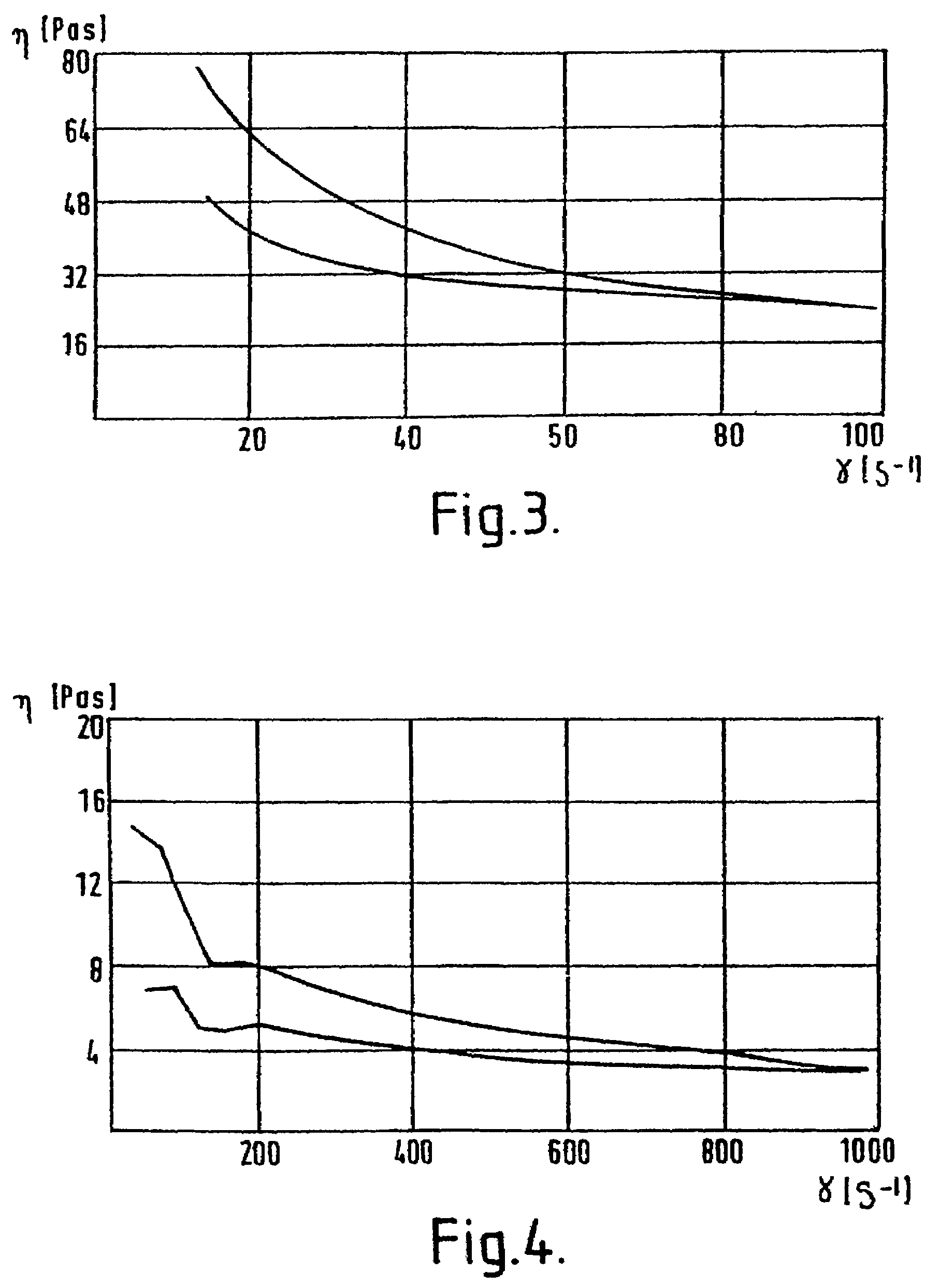Gel compositions
a gel and composition technology, applied in the field of gel compositions, can solve the problems of attenuation of light wave guides, hole and cavity formation on cooling, etc., and achieve the effects of reducing the overall specific weight of gels, high degree of elasticity, and low specific weigh
- Summary
- Abstract
- Description
- Claims
- Application Information
AI Technical Summary
Benefits of technology
Problems solved by technology
Method used
Image
Examples
example 1
[0060]A gel filler was prepared having the following composition:
[0061]
ComponentConcentration (% wt.)White mineral oil89.0SN 500 (Mobil)Thermoplastic elastomer5.5Kraton 1701 or 1702 (Shell)Micro spheres (pre-expanded)5.0Expancel 091 DE (Triones Chems. Int.)Anti-oxidant0.5Irganox L 135 (Ciba-Geigy)
[0062]The gel filler of this example is suitable for filling the interstices between the tubes and conductors (flooding) and is not in direct contact with the fibre guides.
[0063]The gel was prepared as follows:
[0064]The oily base was introduced into a stirred heating-blending tank and heated to 110-120° C. before transferring to a high shear blending-cooling tank, whereupon the thermoplastic elastomer (Kraton) (in the form of granules) was added. The mixture was blended under high shear conditions using a multi-purpose immersion type mixer emulsifier (Silverson Machines Limited, Model GDD 25) for no more than 60 minutes. During the blending process, the temperature of the mixture was allowe...
example 2
[0073]A similar gel filler was prepared in a similar manner to that described in Example 1 but with a different grade of mineral oil. The gel was suitable for use in small pair telephone copper cable filling and flooding applications.
[0074]The gel was subject to a number of physical tests. The results of the physical tests were similar to those of the composition of Example 1 and therefore only the electrical properties are quoted in Table 3.
[0075]
TABLE 3Physical PropertiesPropertyValueTest MethodDielectric constant (23° C.)1.62ASTM D924Dielectric dissipation factor (1 MHz)4.4 × 10−4ASTM D924Volume resistivity (23° C.) Ohm · cm2.8 × 1015ASTM D257Break down voltage kV86
The gel is characterised by a low relative permitivity (1.62) and a high volume resistivity (2.8×1015 Ohm.cm). For purposes of comparison, the relative permitivities of a number of materials are given in Table 4.
[0076]
TABLE 4Relative Permitivities of Various MaterialsMaterialRelative permitivityAir (normal pressure)1.0...
example 3
[0077]A gel suitable for use in filling loose tubes and interstitial filling between ribbons and open slotted cores, was prepared in a similar manner to that described in example 1. The formula for this gel is set out below:
[0078]
ComponentConcentration (% wt.)Poly α-olefin oila66.37Durasyn 166 (Amoco)White mineral oil22.13Whiterex 250 (BP / MobilThermoplastic elastomer7.5Kraton 1701 or 1702 (Shell)Micro spheres (pre-expanded)3.5Expancel 091 DE (Triones Chems. Int.)Anti-oxidant0.5Irganox L 135 (Ciba-Geigy)aThe poly α-olefin oil is also supplied by BP / Mobil as SHF 61
[0079]The gel was subject to a number of physical tests. The results of the physical tests, which were similar to the results of the composition of Example 1, are shown in Table 5.
[0080]In addition the tensile strength and coating strip force of optical fibres were tested according to the standards FOTP-28 and FOTP-178 respectively. The optical fibre was CPC6 manufactured by Siecor. The tests were carried out after ageing of...
PUM
| Property | Measurement | Unit |
|---|---|---|
| temperature | aaaaa | aaaaa |
| particle size | aaaaa | aaaaa |
| diameter | aaaaa | aaaaa |
Abstract
Description
Claims
Application Information
 Login to View More
Login to View More - R&D
- Intellectual Property
- Life Sciences
- Materials
- Tech Scout
- Unparalleled Data Quality
- Higher Quality Content
- 60% Fewer Hallucinations
Browse by: Latest US Patents, China's latest patents, Technical Efficacy Thesaurus, Application Domain, Technology Topic, Popular Technical Reports.
© 2025 PatSnap. All rights reserved.Legal|Privacy policy|Modern Slavery Act Transparency Statement|Sitemap|About US| Contact US: help@patsnap.com


